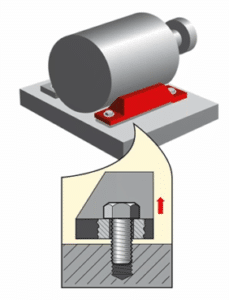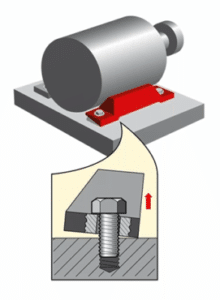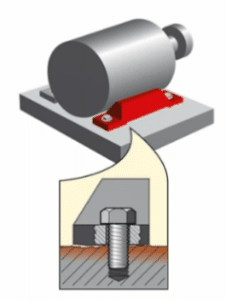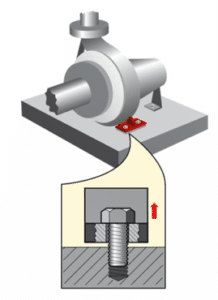Soft foot can damage or destroy machinery
Soft foot is a commonly used industry term describing machine frame distortion. It occurs when rotating machinery is set on its base, frame, or sole plate and one or more of its “feet” fails to make contact with all of the “foot points” on the frame.

Misalignment is the most significant and damaging consequence of soft foot. This condition can also lead to seal failure, distortion, misalignment of bearings, increased load on bearings, and a bent shaft. Together or separately, any one of these situations can destroy machinery if left unchecked.
Why is it important to understand the effects of soft foot on rotating machinery?
| Symptom | Effect |
| The centerline of rotation shifts | Destroys the machine from the inside out |
| A change or shift in shaft position occurs | Warps the machine |
| Residual vibration | Loosens feet over time, causing shims to work their way out |
| Repetitive vibration caused by loose feet | Creates fretting corrosion and damage to the machine base |
| Cyclical fatigue due to areas experiencing highly concentrated stress | Produces cracks that spread along the machine housing |
You must identify what’s causing the soft foot and correct the issue. Finding the problem can be frustrating. But with knowledge, patience, and the right tools, you can diagnose the cause of the condition and correct it.
There are four types of soft foot: parallel soft foot, angular soft foot, squishy foot, and external force soft foot. Here’s an explanation of each condition.
4 types of soft foot

1. Parallel soft foot is usually the easiest to detect and the most common type of soft foot. It happens when a foot doesn’t reach the base and creates a gap between the foot and the frame. As the gap begins to close with each tightening of the bolts, the machine frame starts to bend to fit the baseplate, causing misalignment. You can usually correct the problem by using shims — as long as they are the appropriate thickness, and you don’t use too many.

2. Angular soft foot happens when a machine foot touches the base on either the side or outside of the foot. Because the other side of the foot is bent away, an angle is created between the base and the bottom of the foot. Angular soft foot is harder to diagnose because it occurs at an angle.

3. Squishy foot occurs when too many shims have been used to try to correct a soft foot problem or when an excessive amount of corrosion or debris has built up under the machine foot. This can happen when loosening the bolts during an initial misalignment check, which can release sediment and debris. It’s a frequent problem, especially if the machine’s bolts haven’t been tightened for a long time or if the machinery has been operating continuously and has rarely, if ever, had the bolts loosened.

4. External force is a soft foot condition caused by stress-induced external forces such as pipe strain, electrical connections, or severe misalignment combined with a stiff coupling. It can be hard to diagnose and can happen at any time during machine alignment.
This is the first installment of a two-part blog series about soft foot. In this blog, you learned about the symptoms, effects, and types of soft foot conditions. In the second post, you’ll learn how to diagnose and correct soft foot and how to use laser shaft alignment tools.
Want to learn more about soft foot? Watch the Fluke Accelix Best Practice Webinar, “A hard look at soft foot: detecting machine frame distortion before it causes major issues,” which provides more in-depth information.


